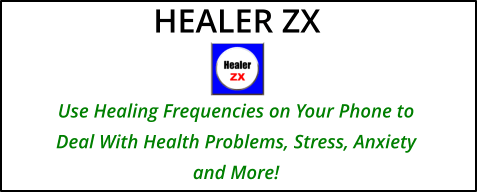Understanding Stroke: A Critical Health Concern
Stroke is a leading cause of disability and death worldwide, affecting millions each year. It occurs when the blood supply to the brain is interrupted, leading to brain cell damage. Understanding stroke is essential not only for prevention but also for effective response and recovery. This article will delve within the types of strokes, risk factors, symptoms, and the importance of immediate medical attention.
According to the World Health Organization, approximately 15 million people suffer a stroke each year, with 5 million succumbing to it. This staggering statistic emphasizes the critical nature of awareness and education surrounding stroke.
Types of Stroke
There are two primary types of stroke: ischemic and hemorrhagic.
- Ischemic Stroke: This is the most common type, accounting for about 87% of all strokes. It occurs when a blood vessel supplying blood to the brain is obstructed, often by a blood clot.
- Hemorrhagic Stroke: This type occurs when a blood vessel in the brain bursts, leading to bleeding within or around the brain. This can be caused by conditions such as high blood pressure or aneurysms.
Risk Factors
Several risk factors can increase the likelihood of experiencing a stroke. Understanding these can empower individuals to make healthier lifestyle choices. Here are the most common risk factors:
- High Blood Pressure: This is the leading cause of stroke, contributing to nearly 50% of ischemic strokes.
- Diabetes: Individuals with diabetes are at a higher risk of stroke.
- Heart Disease: Conditions such as atrial fibrillation may increase stroke risk significantly.
- Smoking: Tobacco use increases blood pressure and reduces oxygen in the blood, raising stroke risk.
- Obesity: Excess weight contributes to high blood pressure, diabetes, and heart disease.
Recognizing the Symptoms
Understanding the symptoms of a stroke is vital for timely intervention. The acronym FAST can benefit recall the warning signs:
- F - Face Drooping: Does one side of the face droop or feel numb? Ask the person to smile.
- A - Arm Weakness: Is one arm weak or numb? Ask the person to raise both arms.
- S - Speech Difficulty: Is speech slurred or hard to understand? Ask the person to repeat a simple sentence.
- T - Time to Call Emergency Services: If any of these signs are observed, call emergency services immediately.
The Importance of Immediate Medical Attention
Time is of the essence when it comes to stroke. The sooner a stroke is treated, the better the chances for recovery. Every minute counts, as brain cells die at an alarming rate – about 1.9 million per minute during a stroke. Quick medical intervention may drastically reduce the risk of long-term disability.
In the case of an ischemic stroke, treatments such as clot-busting medications (thrombolytics) can be administered within the first few hours to restore blood flow. For hemorrhagic strokes, surgical intervention could be necessary to address the bleeding.
Preventive Measures
While not all strokes can be prevented, many risk factors can be managed or mitigated. Here are a few effective strategies:
- Maintain a Healthy Diet: A balanced diet rich in fruits, vegetables, and whole grains could aid reduce stroke risk.
- Exercise Regularly: Aim for at least 150 minutes of moderate aerobic activity each week.
- Control Blood Pressure: Regular check-ups and adherence to prescribed medications are crucial.
- Avoid Smoking and Limit Alcohol: These lifestyle changes will significantly lower your risk.
In conclusion, stroke is a serious medical condition that affects countless individuals and families. Recognizing the signs, understanding the risks, and seeking immediate medical care can make all the difference. Stay informed, stay healthy, and remember that knowledge is power in the fight against stroke.
Understanding Stroke: Signs, Risks, and Recovery
Stroke is a medical emergency that will sometimes strike suddenly and dramatically alter a person's life. Understanding the signs, risks, and pathways to recovery is crucial for prevention and timely intervention. Each minute counts when it comes to stroke, and knowledge is your most powerful ally.
A stroke occurs when the blood supply to a part of the brain is interrupted or reduced, preventing brain tissue from getting oxygen and nutrients. Brain cells begin to die within minutes. There are two main types of stroke: ischemic, caused by blood clots, and hemorrhagic, resulting from bleeding in or around the brain. Both types are serious and require immediate medical attention.
Recognizing the signs of a stroke can be life-saving. The acronym FAST can aid you remember the key indicators:
- Face: Ask the person to smile. Does one side of the face droop?
- Arms: Can the person raise both arms? Does one arm drift downward?
- Speech: Is their speech slurred or strange? Can they repeat a simple sentence correctly?
- Time: If you observe any of these signs, call emergency services immediately.
Time lost is brain lost, and the sooner treatment begins, the better the chances for recovery. But why do strokes happen in the first place? Understanding the risk factors is essential. Some are uncontrollable, like age, gender, and family history. Others, however, will be managed. High blood pressure, diabetes, smoking, obesity, and high cholesterol are significant contributors to stroke risk.
It's important to adopt a heart-healthy lifestyle to mitigate these risks. Regular exercise, a balanced diet rich in fruits and vegetables, maintaining a healthy weight, and avoiding tobacco can significantly lower your chances of experiencing a stroke. It's about making small, sustainable changes that can lead to big results.
But what happens after a stroke? Recovery can be a long and challenging journey, filled with ups and downs. Rehabilitation often involves a multidisciplinary team of healthcare professionals, including doctors, nurses, physical therapists, and occupational therapists. Their goal is to help you regain as much function as possible and adapt to any lasting changes.
Emotional support is equally crucial during recovery. Many stroke survivors experience feelings of frustration, sadness, and anxiety. Support groups and counseling will sometimes provide comfort and guidance as individuals navigate their new realities. Remember, you are not alone in this journey.
In conclusion, raising awareness about stroke is vital. By recognizing the signs, understanding the risks, and knowing the recovery process, you can empower yourself and others. Make sure to share this information with loved ones, and encourage regular health check-ups. After all, knowledge is not just power; it can be life-saving.
Through education and proactive measures, we will sometimes combat the impact of stroke and enhance the quality of life for those affected. Let's work together to raise awareness and reduce the incidence of this devastating condition.
Understanding Stroke: A Personal Journey Through Knowledge
When we think about health, the word stroke often evokes fear. But understanding what a stroke truly is will empower us and perhaps, save a life. According to the American Stroke Association, A stroke occurs when blood flow to an area of the brain is interrupted. This will lead to serious brain damage or even death if not treated promptly. But what does this really mean for you and your loved ones?
Imagine this: you are having a conversation with a friend, and suddenly, they start slurring their words. Their smile is uneven, and one side of their face droops. These are classic signs of a stroke. Recognizing these symptoms quickly is crucial. Remember the acronym FAST: Face drooping, Arm weakness, Speech difficulty, and Time to call emergency services.
But let's dive deeper. Did you know that there are different types of strokes? The most common is an ischemic stroke, caused by a blood clot blocking a blood vessel in the brain. Then there's the hemorrhagic stroke, which occurs when a blood vessel ruptures. Each type has different risk factors and treatments, which is why understanding them can be life-saving.
Dr. John Smith, a renowned neurologist, states, "Early intervention will significantly reduce the long-term effects of a stroke. Time is brain." This emphasizes the importance of acting quickly. If you or someone you know experiences symptoms, don't hesitate. Call for aid immediately.
Now, let's talk prevention. You may be wondering: how can I reduce my risk? Maintaining a healthy lifestyle is key. Regular exercise, a balanced diet, and avoiding smoking are vital. According to the Centers for Disease Control and Prevention (CDC), "Controlling high blood pressure, diabetes, and high cholesterol can significantly lower your stroke risk."
As we navigate through life, it's essential to be aware of our health. Regular check-ups and screenings can assist catch potential issues early on. It's also important to discuss your family history with your health practitioner, as genetics can play a role in stroke risk.
In conclusion, understanding stroke is not just about statistics or medical jargon; it's about people. It's about your friends, your family, and yourself. Spread the word, educate others, and let's work together to combat this silent killer. Remember, knowledge is power, and being informed can make all the difference.
Understanding Stroke: A Friendly Guide to Prevention and Awareness
Hey there! Let's chat about something super important—stroke. You might have heard the term thrown around, though what does it really mean? Stroke is a medical emergency that occurs when the blood supply to part of the brain is interrupted or reduced, preventing brain tissue from getting necessary nutrients and oxygen. This may lead to serious complications, though don't worry! We're here to break it down in a friendly way.
There are two main types of strokes: ischemic and hemorrhagic. Ischemic strokes, which account for about 87% of all strokes, happen when a blood vessel supplying blood to the brain gets blocked. On the flip side, hemorrhagic strokes occur when a blood vessel in the brain bursts, leading to bleeding in or around the brain. Both types require immediate medical attention, so knowing the signs is crucial!
So, what are the warning signs of a stroke? Remember the acronym FAST:
- Face drooping – Does one side of the face droop or feel numb? Ask the person to smile.
- Arm weakness – Is one arm weak or numb? Have them raise both arms. Does one drift downward?
- Speech difficulty – Is speech slurred or strange? Ask them to repeat a simple sentence.
- Time to call 911 – If you see any of these signs, don't hesitate! Call for emergency help right away.
Now, let's talk about prevention! Understanding risk factors could empower you to make healthier choices. Here are some key factors to keep in mind:
- High blood pressure: Keeping your blood pressure in check is vital. Regular check-ups can help.
- Diabetes: Managing diabetes through diet and medication can reduce your stroke risk.
- Smoking: Quitting smoking has immediate and long-term benefits for your health.
- Physical activity: Stay active! Aim for at least 150 minutes of moderate exercise each week.
- Healthy diet: Eating a balanced diet rich in fruits, vegetables, and whole grains will make a big difference.
Additionally, it's essential to maintain a healthy weight and limit alcohol consumption. Every small step you take will lead to a healthier lifestyle and lower your chances of experiencing a stroke.
Don't forget—awareness is key! Educate yourself and your loved ones about the risks and signs of stroke. For more detailed information, check out resources from the American Stroke Association and the Centers for Disease Control and Prevention.
In conclusion, understanding stroke is about more than just knowledge; it's about taking action. By learning the signs and risk factors, you can play a part in preventing strokes in yourself and others. Remember, you're not alone on this journey—let's spread the word and keep our communities informed. Together, we can make a difference!





